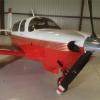When do engines fail on takeoff?
-
Members Online
- Nico1
- Jsno
- fdc7169
- Skypunk107
- ta2too
- MDMooney
- Paul Thomas
- Tx_Aggie
- johnnyr172
- wrr
- peterl
- icurnmedic
- Andy95W
- ProtoFly
- pirate
- Yooper Rocketman
- prillayo03
- Speed Brakes
- jetdriven
- TCC
- raymondscott0321
- Mooney-Shiner
- Tmack201
- TheMooneyAnomaly
- eman1200
- 1980Mooney
- glbtrottr
- ElkoRandy20J
- WilliamR
- Ibra
- Lumberg
- MattD89
- generalaviationguru
- hubcap
- Justin Schmidt
- slowflyin
- EricJ
- toto
- PT20J
- aviatoreb
- NickG
- FoxMike
- haymak3r


Recommended Posts
Join the conversation
You can post now and register later. If you have an account, sign in now to post with your account.